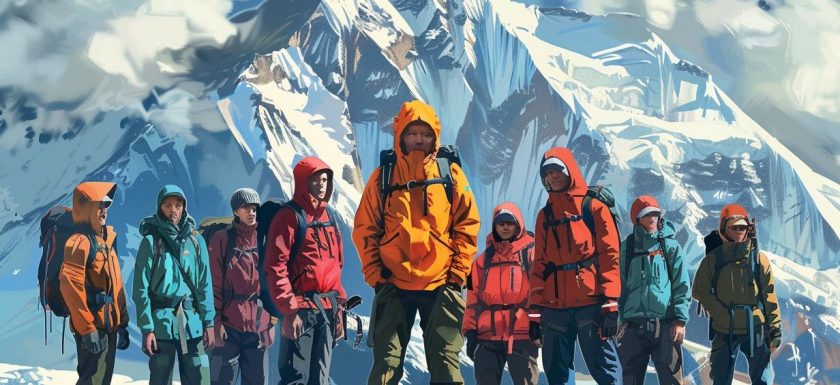
Are you planning to conquer the majestic Mount Kilimanjaro? Proper dress is essential for a successful climb, ensuring your comfort and safety in changing weather conditions.
We will guide you on the essential clothing items and recommended materials for your journey, from base layers to outer layers. Discover the types of shoes and accessories you need, along with expert tips on layering your clothing effectively.
Remember to consider the weather conditions, test your clothing beforehand, and pack smart for a memorable climbing experience.
Key Takeaways:
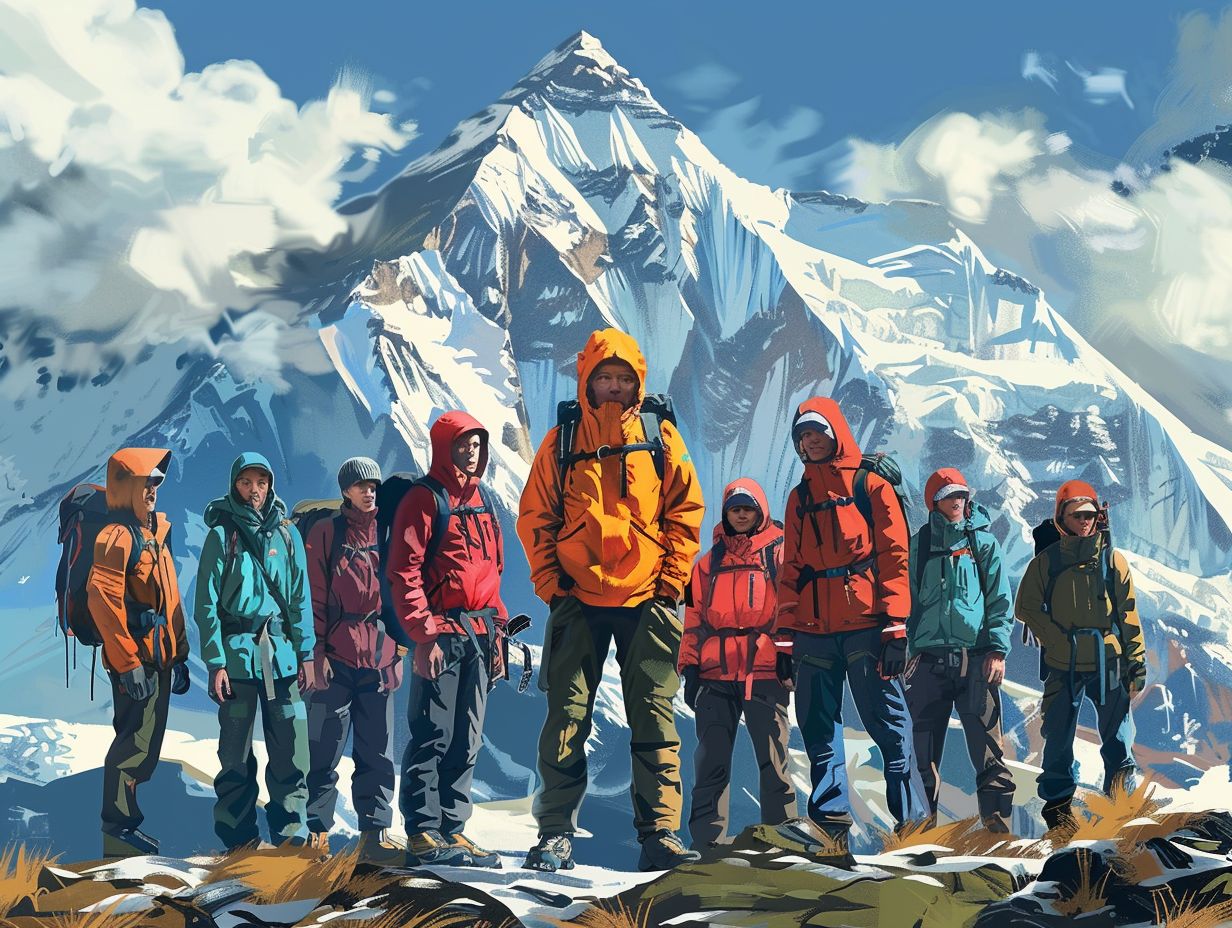
- Proper dressing is crucial for a successful climb on Kilimanjaro, as it protects from extreme weather conditions and ensures comfort.
- Essential clothing items for Kilimanjaro include base and insulating layers, outer layers, and accessories like headwear and handwear.
- When dressing for Kilimanjaro, choose appropriate materials, layer wisely, and consider the weather conditions to ensure a safe and comfortable journey.
Why is Proper Dress Important for Climbing Kilimanjaro?
Proper dress is crucial for climbing Kilimanjaro due to the extreme weather conditions and varying temperatures encountered during the trek to the summit. The layering system ensures comfort, warmth, and protection against the elements throughout the climb.
When preparing for your Kilimanjaro adventure, it’s essential to choose clothing made of moisture-wicking materials to keep you dry and prevent chafing. Merino wool base layers are ideal for regulating temperature as they wick away sweat while providing insulation.
- Invest in a good quality waterproof and windproof hardshell jacket to shield you from the harsh elements at higher altitudes.
- Don’t forget to pack insulated gloves, a fleece hat, and a balaclava for protection against frostbite and wind chill.
What are the Essential Clothing Items for Climbing Kilimanjaro?
Essential clothing items for climbing Kilimanjaro include base layers, insulating layers, outer layers, and various accessories to ensure protection and comfort during the ascent to the summit.
Base layers form the foundation of your Kilimanjaro outfit, effectively wicking away moisture and regulating body temperature. Opt for moisture-wicking fabrics like merino wool or synthetic materials to keep sweat at bay.
Insulating layers, such as fleece jackets or down vests, are crucial for trapping heat close to the body, especially during chilly nights and high altitudes.
Outer layers like waterproof jackets and pants shield you from unpredictable mountain weather while maintaining breathability. Don’t forget essential accessories like hats, gloves, and neck gaiters to protect exposed areas and combat frostbite.
Base Layers
Base layers are essential for moisture-wicking and temperature regulation. Options include wool for warmth, synthetic for quick-drying, and avoiding cotton due to its moisture retention properties.
A high-quality base layer plays a crucial role in your comfort during outdoor activities. Wool base layers are excellent for insulating heat, keeping you warm even when wet. On the other hand, synthetic fabrics like polyester and nylon are perfect for their quick-drying properties, making them ideal for intense activities.
Opting for moisture-wicking base layers helps in managing sweat effectively, pulling moisture away from your skin to keep you dry and prevent chafing. Proper temperature regulation is vital to avoid overheating or getting too cold, especially in changing weather conditions.
Insulating Layers
Insulating layers such as fleece jackets and down jackets are crucial for providing warmth, especially during the cold temperatures experienced at higher altitudes, including on summit night.
When considering insulating layers for cold weather conditions, it is essential to understand the role they play in trapping and retaining body heat. Fleece jackets are highly breathable and moisture-wicking, making them ideal for active pursuits in cooler climates. On the other hand, down jackets offer unparalleled warmth-to-weight ratio due to their lofty insulating properties.
Layering these garments following the layering principle is key to staying warm and comfortable. This involves wearing a base layer for moisture-wicking, an insulating layer such as fleece or down for warmth, and a protective outer shell for wind and waterproofing.
Choosing appropriate fabrics for insulation is equally important. Look for materials like polyester fleece and ethically sourced down that offer excellent warmth while remaining lightweight and compressible, allowing for ease of movement during outdoor activities.
Outer Layers
Outer layers, including rain jackets and waterproof pants, are essential to protect against rain, wind, and snow. Choosing breathable and waterproof materials is critical for comfort and weather resistance.
Not only do these outer layers shield you from the whims of the weather, but they also offer a barrier against moisture seeping through and dampening your clothes underneath. A good rain jacket is like a reliable shield, deflecting raindrops effortlessly.
Pairing it with waterproof pants completes the ensemble, ensuring that you stay dry and comfortable in even the most challenging conditions. Don’t forget the significance of adequate headgear and gloves to maintain full coverage and protection.
These accessories play a crucial role in preserving body heat and shielding your extremities from the harsh elements. Investing in quality outer layers equipped with the right features is essential for any outdoor enthusiast looking to stay comfortable and safe during inclement weather.
Accessories
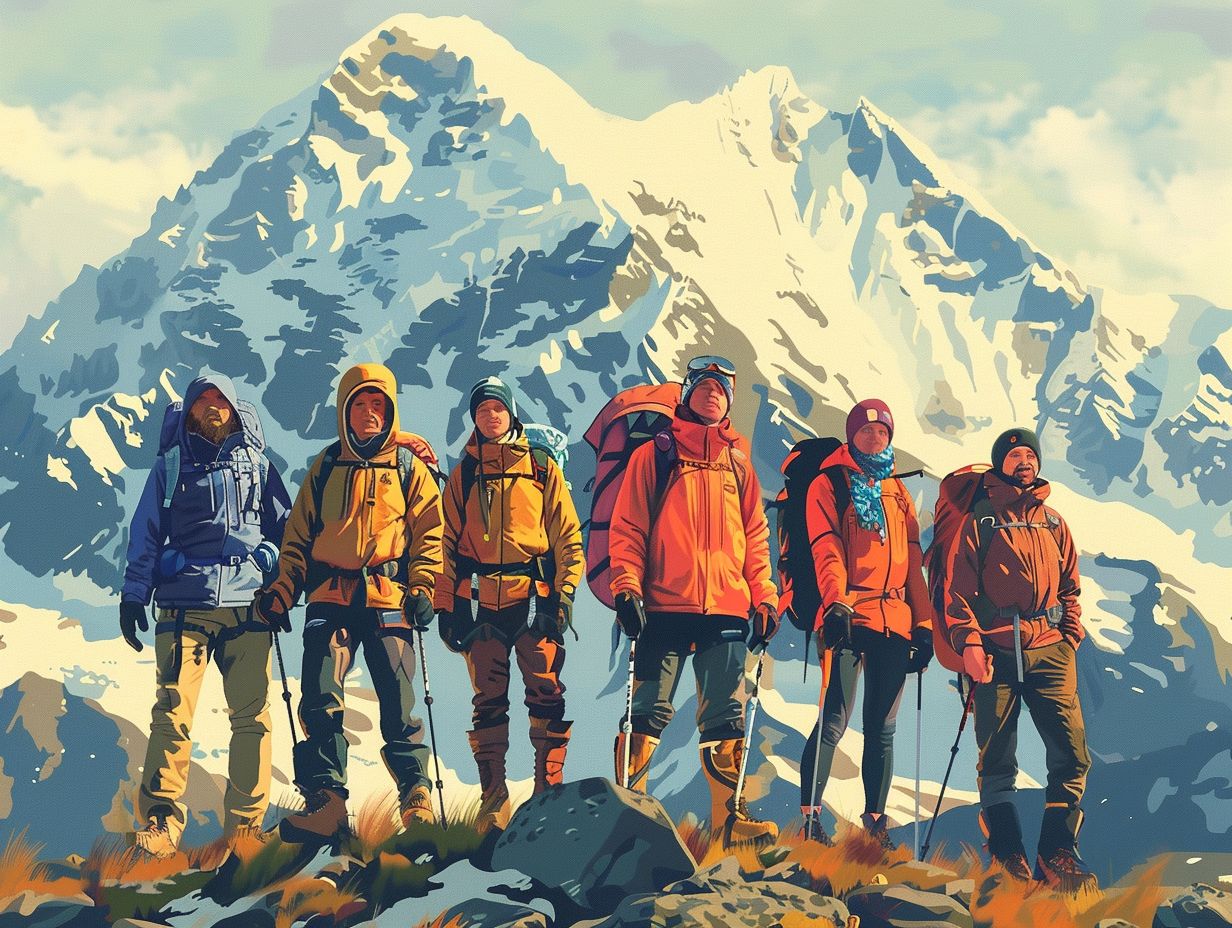
Accessories such as gloves, hats, socks, sunglasses, rain ponchos, and appropriate footwear are essential for additional protection and comfort during the climb.
When embarking on a challenging climb, gloves shield your hands from rough surfaces and provide a better grip, whereas a durable pair of hiking socks can prevent blisters and ensure moisture-wicking performance.
Hats safeguard you from harsh sunlight or unexpected rain showers, keeping you focused on the trail ahead. Sunglasses not only shield your eyes from UV rays but also reduce glare, enhancing visibility in varying terrains.
In case of unexpected downpours, a compact rain poncho can prevent chilling and discomfort, ensuring you stay dry and warm during your ascent. Properly selected footwear is paramount for stability and support, helping you navigate the rugged terrain with confidence.
What are the Recommended Materials for Clothing?
Recommended materials for clothing when climbing Kilimanjaro include GORE-TEX, eVent, Merino Wool, PrimaLoft, Smartwool, Icebreaker, Patagonia, Columbia, Kuhl, Fjallraven, Arc’teryx, Marmot, and Pertex Shield for optimal performance in varying weather conditions.
When embarking on a challenging adventure like climbing Kilimanjaro, the choice of clothing materials can make a significant impact on your comfort and safety. Merino Wool, known for its unparalleled moisture-wicking properties and natural odor resistance, is a popular choice to regulate body temperature during the expedition.
PrimaLoft, on the other hand, is a reliable insulation material that offers exceptional warmth without the bulk, perfect for layering in cold conditions.
Brands like Smartwool, Icebreaker, and Arc’teryx have gained widespread recognition for their innovative use of these advanced fabrics in their outdoor apparel. Smartwool’s Merino base layers are praised for their softness and breathability, while Arc’teryx’s GORE-TEX jackets are renowned for their waterproof and windproof capabilities.
What Types of Shoes are Suitable for Climbing Kilimanjaro?
Choosing the right footwear for climbing Kilimanjaro is crucial as it affects comfort, performance, and protection against the diverse terrain and weather conditions encountered during the trek.
When embarking on a journey like climbing Kilimanjaro, proper footwear becomes your best companion, offering stability on rocky paths and grip on challenging terrains. The right shoes can prevent blisters, hot spots, or even more serious injuries, allowing you to focus on the breathtaking views rather than discomfort.
- Not only do hiking boots provide ankle support for uneven ground, but they also safeguard your toes from rocks or debris, ensuring a safe and enjoyable ascent.
- Matching these with quality hiking socks can further enhance the overall experience by wicking moisture away, keeping your feet dry and reducing the risk of frostbite in colder climates.
What are the Must-Have Accessories for Climbing Kilimanjaro?
Must-have accessories for climbing Kilimanjaro include headwear like hats and balaclavas, handwear such as gloves and mittens, eyewear like sunglasses, and protective gear like gaiters, rain jackets, and waterproof pants to ensure full protection and comfort during the trek.
When embarking on a challenging trek like Kilimanjaro, it’s crucial to have the right gear to combat the diverse weather conditions. Investing in high-quality gloves is essential to protect your hands from the biting cold as you ascend the mountain. Similarly, mittens can provide additional warmth and insulation, especially during extreme weather moments.
Don’t underestimate the power of proper eye protection. A sturdy pair of sunglasses will shield your eyes from the glaring sun, snow glare, and UV rays, ensuring clear vision and preventing snow blindness.
To shield your lower limbs from snow, debris, and moisture, gaiters act as a vital barrier, keeping your feet and lower legs dry and protected throughout the climb.
Headwear
Headwear such as hats and balaclavas is essential for protecting against extreme temperatures and providing sun protection during the climb on Kilimanjaro.
In the unpredictable and high-altitude environment of Kilimanjaro, climbers are exposed to harsh weather conditions, ranging from scorching sun rays to freezing temperatures. Proper headgear plays a crucial role in regulating body temperature and protecting the face and head from sunburn.
Hats shield the face and neck from direct sunlight, reducing the risk of sunstroke and dehydration. On the other hand, balaclavas cover the entire head and neck, providing insulation against cold winds and preventing heat loss.
- Choosing the right hat with a wide brim and neck flap can offer shade and UV protection, enhancing comfort during long expeditions.
- For climbers ascending through different climate zones on Kilimanjaro, versatile headwear like convertible caps or neck gaiters can adapt to changing weather conditions.
- When selecting a balaclava, lightweight and moisture-wicking materials are ideal to manage sweat and maintain warmth without compromising breathability.
Handwear
Handwear, including gloves and mittens, plays a critical role in providing comfort, insulation, and protection to the extremities from the cold temperatures experienced while climbing Kilimanjaro.
The choice between gloves and mittens depends on various factors such as the temperature, dexterity needed, and personal preference.
- Gloves are preferred by climbers who require more finger mobility for activities like clipping carabiners or adjusting equipment. They offer better dexterity but might not provide as much warmth as mittens.
- On the other hand, mittens are excellent for extreme cold conditions since they keep the fingers together, maximizing warmth by sharing body heat. They are bulkier but ideal for maintaining warmth on summit night when the temperatures plummet.
Footwear
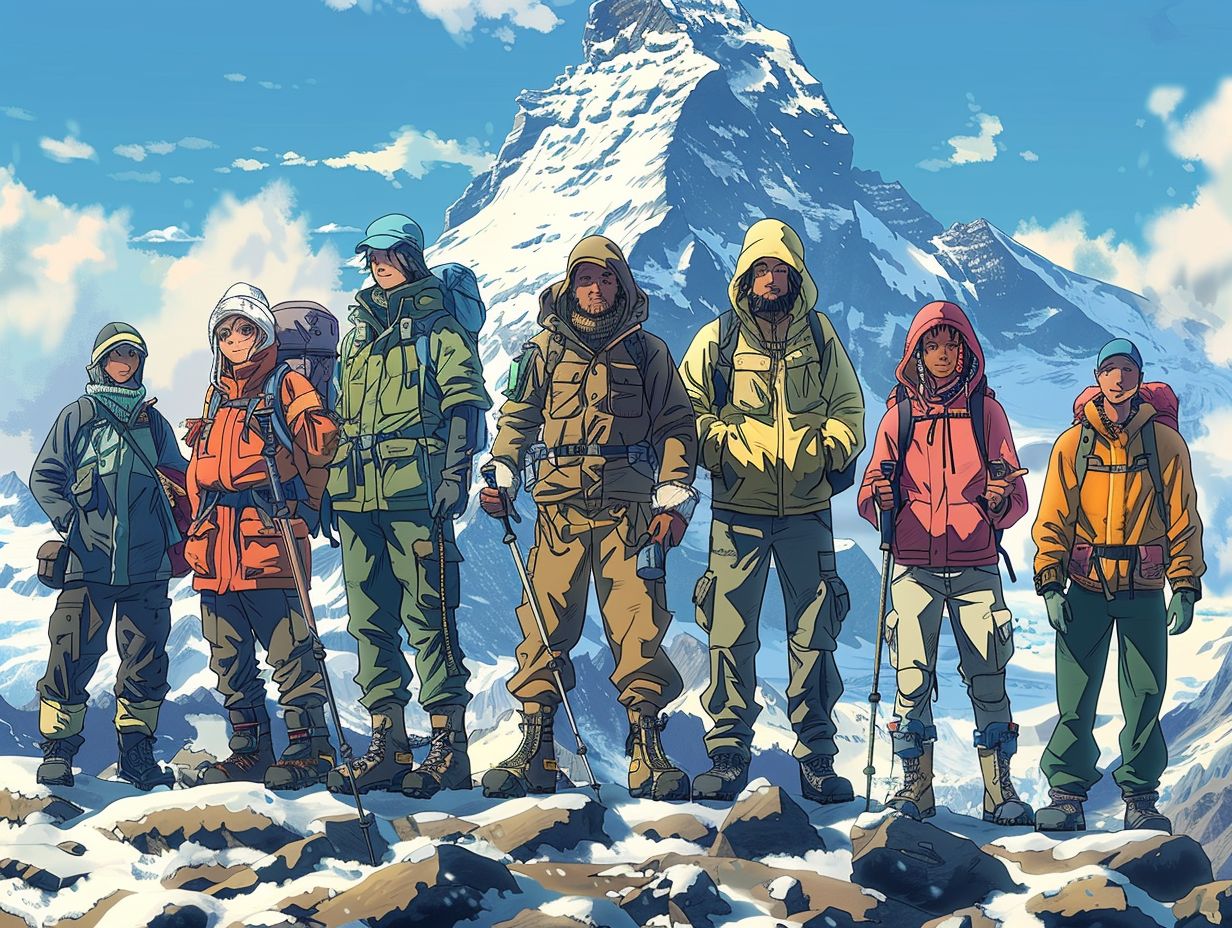
Choosing appropriate footwear, socks, and considering rain protection through ponchos is vital to ensure comfort, dryness, and stability while navigating the varied terrains and weather conditions of Kilimanjaro.
Proper footwear provides the foundation for a successful climb, offering essential support and grip on rugged paths. Hiking shoes with sturdy soles and ankle support are crucial to prevent injuries and maintain stability on steep inclines.
Likewise, high-quality moisture-wicking socks help in keeping feet dry and blister-free during long hikes. Investing in a reliable rain poncho can shield climbers from unexpected downpours, ensuring they stay dry and comfortable throughout the journey.
Eyewear
Eyewear, particularly sunglasses, is crucial for protecting the eyes from UV rays, ensuring comfort, visibility, and eye safety during the trek on Kilimanjaro.
When climbing Kilimanjaro, the sun’s rays can be intense, making proper eye protection essential. Not only do sunglasses shield your eyes from harmful UV rays, but they also reduce glare off snow and ice, preventing snow blindness. The right eyewear can enhance the contrast of the terrain, making it easier to navigate through varying landscapes.
The comfort provided by well-fitting sunglasses can prevent distractions and discomfort, allowing climbers to focus on their journey and surroundings. Choosing the correct eyewear is just as crucial as selecting the other trekking essentials for a successful and safe climb.
What are the Tips for Layering Clothing for Climbing Kilimanjaro?
Effective layering of clothing is key for adapting to changing weather conditions and temperature fluctuations on Kilimanjaro.
By utilizing a well-thought-out layering system, climbers can easily regulate their body temperature according to the varying conditions encountered during the ascent. Layering involves strategically combining different types of clothing to create a versatile barrier against external elements.
A base layer wicks moisture away from the skin, while the insulating layer traps heat close to the body. The outer shell protects against wind, rain, and snow. This system not only provides warmth and comfort but also allows climbers to easily adjust their clothing as the weather conditions evolve.
What are Some Additional Tips for Dressing for Climbing Kilimanjaro?
When dressing for climbing Kilimanjaro, consider the prevailing weather conditions, temperature range, and the need for sun protection, comfort, and carrying essential gear as part of your trekking ensemble to ensure a safe and enjoyable experience.
Layering is essential when preparing your clothing for Kilimanjaro. Start with a moisture-wicking base layer to keep sweat away from your skin, add an insulating middle layer for warmth, and top it off with a waterproof and windproof outer layer to protect against the elements.
Don’t forget to wear a wide-brimmed hat and high SPF sunscreen to shield yourself from the strong UV rays at higher altitudes. Sunglasses with UV protection are a must to prevent snow blindness. Choose moisture-wicking socks and sturdy hiking boots for comfortable and blister-free trekking.
Pack important gear such as a headlamp, trekking poles, a refillable water bottle, high-energy snacks, and a first aid kit in your backpack for any unforeseen situations during your climb.
Consider the Weather Conditions
Consider the prevailing weather conditions and temperature variations to determine the appropriate clothing layers and gear needed to maintain comfort and safety during the climb on Kilimanjaro.
Understanding the weather dynamics is crucial for climbers tackling Kilimanjaro, as this majestic peak is known for its diverse climates that can change rapidly. The temperature can vary significantly from the base to the summit, ranging from scorching heat to freezing cold.
Having a suitable layering system is imperative to adapt to these fluctuations efficiently. Layering not only helps in regulating body temperature but also protects against elements like wind and precipitation.
By meticulously assessing the weather forecast and terrain challenges, climbers can make informed decisions on the type of clothing to wear and gear to carry for a safe and enjoyable ascent.
Test Out Your Clothing Beforehand
Before embarking on the Kilimanjaro trek, test out your clothing and gear to ensure they fit well, are moisture-wicking, and meet the requirements of the trekking expedition.
Properly fitting clothing and gear are essential for a successful ascent up Kilimanjaro. Ill-fitting items can cause discomfort and potentially lead to blisters or overheating, hindering your progress. Moisture-wicking fabrics are crucial to keep you dry and comfortable, especially in varying weather conditions on the mountain.
Ensuring that your gear is ready and reliable before setting off can prevent any mishaps during the climb. It’s advisable to test your equipment in different conditions to gauge its performance and make any necessary adjustments. A well-prepared hiker is better equipped to tackle the challenges of the trek.
Don’t Forget About Sun Protection
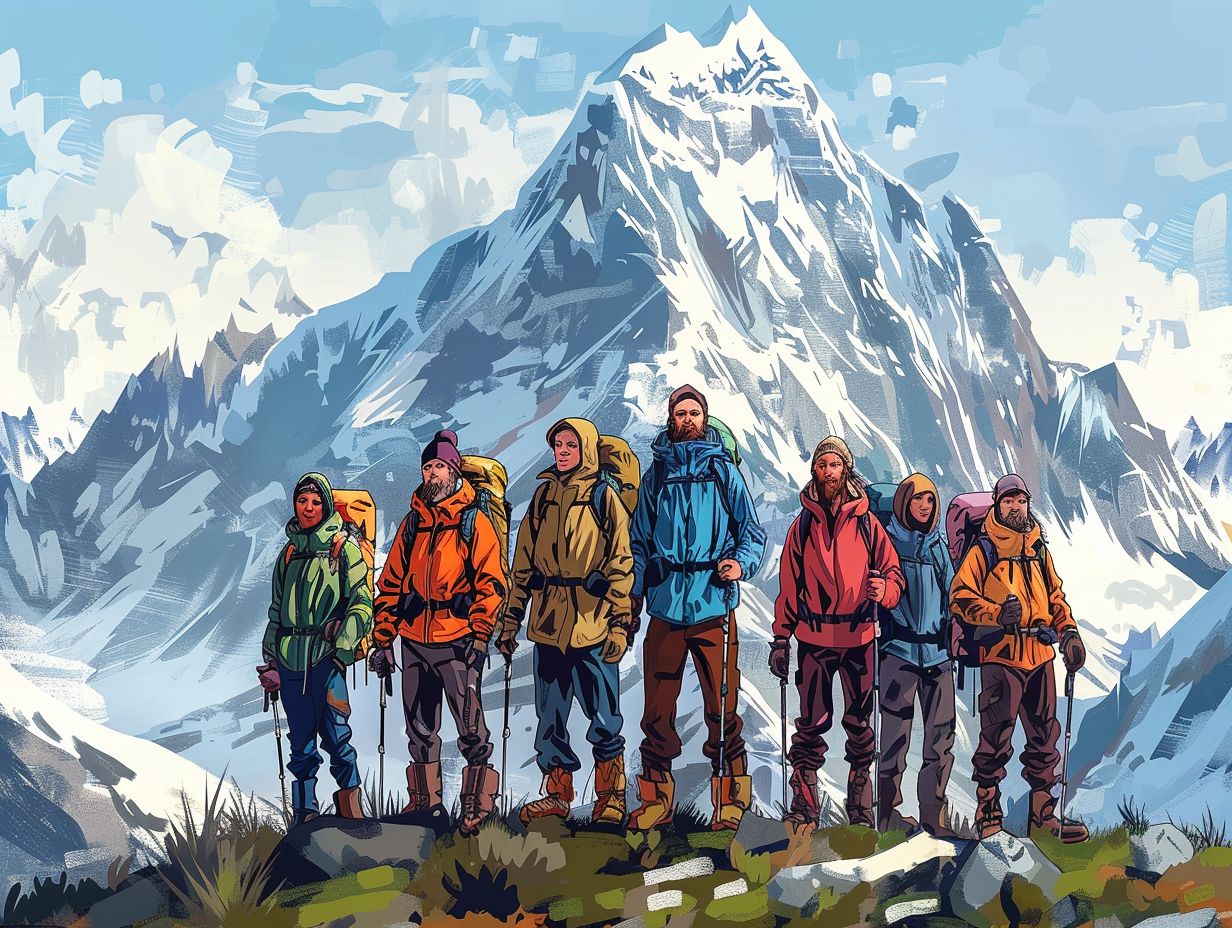
Ensure comprehensive sun protection by covering exposed skin with suitable headgear, gloves, mittens, balaclavas, and sunglasses to prevent sunburn and maintain comfort during the ascent on Kilimanjaro.
Trekking in high altitudes exposes climbers to intense UV radiation, putting them at risk of sun damage. Headgear like wide-brimmed hats or caps with neck flaps provide shade for the face and neck. Investing in UV-resistant gloves or mittens shields the hands from harmful rays.
Balaclavas offer full-face protection, crucial for preventing sunburn and windburn. Additionally, sunglasses with a high UV protection rating safeguard the eyes from glare and potential long-term damage from UV exposure.
Pack Light and Pack Smart
Pack light and smart by prioritizing essential gear like waterproof pants, headgear, gloves, mittens, sunglasses, and rain jackets while following a strategic layering system to manage moisture, insulation, and comfort during the climb on Kilimanjaro.
Efficient packing for climbers is crucial given the varying conditions and challenges one can encounter on a climb like Kilimanjaro.
Waterproof pants are essential to keep dry in case of rain or snow, while headgear protects from the sun and cold. Gloves and mittens offer crucial hand protection, and sunglasses shield the eyes from harsh UV rays. A proper layering system ensures that the climber can adjust to changing temperatures, preventing sweat buildup and ensuring comfort throughout the expedition.
Frequently Asked Questions
What type of clothing should I pack for climbing Kilimanjaro?
When packing for your Kilimanjaro climb, it’s important to consider the various climate zones you will encounter. We recommend packing warm and breathable layers, a waterproof jacket, and sturdy hiking boots. It’s also important to pack clothes made of moisture-wicking material to keep you dry and comfortable during your climb.
What type of footwear should I wear for climbing Kilimanjaro?
For climbing Kilimanjaro, it’s best to wear sturdy hiking boots with good ankle support. Your boots should also have a strong grip for navigating the varying terrain. It’s important to break in your boots before your climb to avoid blisters and discomfort.
Do I need to pack any special gear for climbing Kilimanjaro?
In addition to warm and breathable clothing, it’s important to pack a few essential items for your Kilimanjaro climb. These include a sleeping bag, trekking poles, and a headlamp for early morning starts. It’s also recommended to bring a lightweight daypack for carrying essentials during your daily hikes.
What type of headgear should I bring for climbing Kilimanjaro?
As you climb higher in altitude, the sun’s rays become stronger and more intense. It’s important to pack a hat with a brim to protect your face and neck from the sun. It’s also a good idea to bring a beanie or balaclava to keep your head warm in colder temperatures.
Are there any clothing items I should avoid packing for Kilimanjaro?
It’s best to avoid packing cotton clothing for your Kilimanjaro climb. Cotton is known to retain moisture and can make you feel cold and uncomfortable. Instead, opt for moisture-wicking materials like wool or synthetic blends. It’s also recommended to avoid packing jeans, as they are heavy and take a long time to dry if they get wet.
Do I need to bring any rain gear for my Kilimanjaro climb?
Yes, it’s important to pack a waterproof jacket and pants for your Kilimanjaro climb. The weather on the mountain can be unpredictable, and sudden rain showers are common. It’s also helpful to bring a rain cover for your backpack to keep your belongings dry.